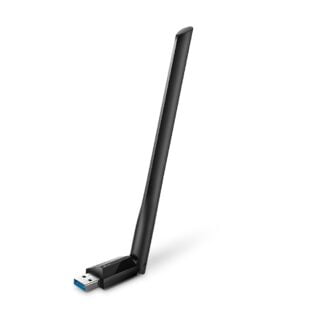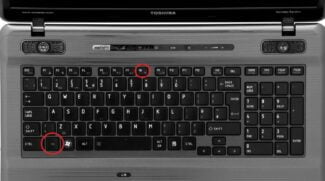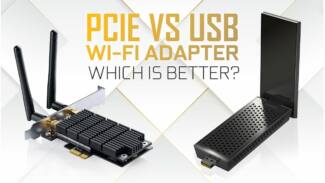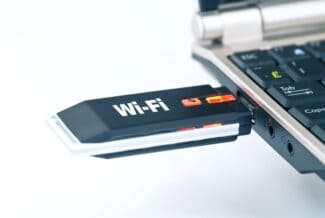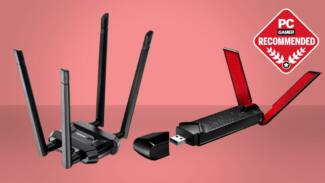Once it has been decided to replace the module, you should decide on the manufacturer and model of the device. The replacement procedure itself is very simple and the following will tell you how to perform it without any problems and big time expenditures. First of all, you need to choose an adapter in a computer accessory store or on the Internet.

- How to Choose a USB WiFi Adapter for a Computer or Laptop in 2023-2024? Best Wireless Receivers
- Types of wifi adapters for computer and laptop
- Wi-Fi adapter – what is it
- Types of Wi-Fi adapters
- Connecting to a computer and laptop
- Connecting a Wi-Fi receiver to set-top boxes or receivers
- An overview of the top best models of Wi-Fi adapters
- External models connected via USB-port
- Which Wi-Fi adapter is better to buy
- What kind of Wi-Fi adapters are there? Deciding on a connection interface
- Connection Features
- How to properly configure the Wi-Fi adapter
How to Choose a USB WiFi Adapter for a Computer or Laptop in 2023-2024? Best Wireless Receivers
A Wifi adapter for your computer/laptop is a special device that allows you to receive a signal from a router. As well as an access point, a repeater, or any other device that broadcasts the internet with this data transmission method. Today I will tell you how to choose the right wifi network adapter for your computer or laptop. And at the end of the article will be the TOP best network receivers that we have personally tested.
A WiFi adapter is needed to connect your computer, laptop, or TV to the Internet through a wireless signal. Without a network adapter, neither your computer nor your laptop will be able to connect to the Internet via a wifi router.
Types of wifi adapters for computer and laptop
In the vast majority of cases laptop already built from the factory. It is placed inside the case itself, and on the cover or in the manual will necessarily be present a typical wifi icon. A desktop computer most often doesn't have one. Especially if you built it yourself. In this case, you can use an external wireless adapter connected via USB connector. This type is also suitable for a laptop if the built-in module has failed, which happens quite often.
So if you decide that you need a wifi adapter, then before you go to the store for this device, let's get acquainted with their types.
- A PCI adapter is a built-in wifi receiver designed to be installed inside a computer case. It plugs directly into the PCI slot on the motherboard – hence its name.
 The advantage of this type is that the speed and stability of its interaction with the processor is the highest possible, which means that the connection to the wireless network will be as reliable. A characteristic feature of the PCI adapter installed in the PC are the external antennas sticking out of the back of the case.
The advantage of this type is that the speed and stability of its interaction with the processor is the highest possible, which means that the connection to the wireless network will be as reliable. A characteristic feature of the PCI adapter installed in the PC are the external antennas sticking out of the back of the case. 
- A USB adapter is a network device which has the same characteristics but is connected to the PC via a USB port. As you can see, it is less reliable because the distance is longer and the extra connecting links in the form of these ports, and not too tight contacts inside them clearly do not improve the quality of signal reception.
Despite all the disadvantages, for the home I would choose the version with USB, because it can be used not only on a PC, but also on any laptop with this port. It looks like a flash drive, and its size can vary from very small to quite large.
Wi-Fi adapter – what is it
Wi-Fi adapter is a discrete or integrated device that allows a technical device to connect to the Internet, without using a wired connection.
In most cases, it is a device with a chip that is either initially built into the device, or it is connected via a PCI Express connector, or directly using one of the USB inputs.
Depending on the type of gadget being used, the variation in how the module is embedded can vary.
What is a Wi-Fi wireless network adapter and what does it do in a computer or laptop? This is an interesting question, to understand which will be useful for many technology enthusiasts.
So, a wi-fi adapter is a device that allows you to connect equipment to your router without resorting to a wired connection.
As for TVs, tablets and smartphones, everything is quite simple: in most cases of assembly, the Wi-Fi adapter is originally a factory-installed part. Although it would be technically correct to call it – the Wi-Fi module.
In the work of a desktop computer, initially the wi-fi adapter is not provided. In order to make a wireless connection of the computer to the Internet, it will have to be purchased.
If we are talking about a laptop, built-in modules often fail and stop working. In this case, the adapter may need to be replaced.
Alternative situations where you may need to buy a wi-fi receiver for your laptop:
- When the laptop model is somewhat outdated and does not have any type of connection other than wired.
- The owner of the laptop needs to support a wider range of Wi-Fi network.
- When changing the operating system, no suitable driver was found to support the network card or Wi-Fi module.
Types of Wi-Fi adapters
Depending on the device for which the Internet receiver is selected, the number of installation options may differ.
Connecting to a computer and laptop
In the case where the owner of a desktop computer decided to get a wi-fi adapter, you can notice that there may be several options for the purchased equipment:
- Internal. These are adapters, with a design that provides for installation in a PCI Express slot and M.2 slot. Such a modification will force the user to open the computer, and install the equipment directly into the motherboard. There is an opinion that such installation of adapters is somewhat more reliable precisely due to the fact that it takes place directly to the board. The installation of device drivers in such cases is carried out from the manufacturer's disk, so that the compatibility of the adapter and the computer system is not broken.
- External. This is the name given to those Wi-Fi receivers which are connected to the computer via USB ports. Outwardly they may resemble the usual flash drives, familiar to everyone from computer lessons. Although recently, more and more often there are variants with an antenna, like a router: this allows the computer to better and further recognize the signal. In the installation process, they are much easier: after connecting to the USB port, the computer will automatically install the drivers necessary for normal operation, just as in cases with other peripheral equipment.
When installing the adapter in a laptop, the owner will also have a choice of both external and internal types of devices: these include options with installation in the USB port and M.2 slot.
Wi-Fi adapters suitable for laptops cannot include models that require installation in a PCI Express slot, as it is not provided in this type of computer.
Connecting a Wi-Fi receiver to set-top boxes or receivers
To improve signal reception, many users buy a variety of set-top boxes. Most of them have a USB port input that allows you to connect your phone as a separate device, a flash drive for viewing pre-installed files, or install a wi-fi adapter for scrolling and surfing the Internet.
An overview of the top best models of Wi-Fi adapters
The entire range of wireless signal receivers and transmitters is divided into three big types by type of connection or installation. They come in:
- External, connected to the system unit or laptop through a USB port;
- Internal or built-in, which are soldered directly onto the board;
- Card-based, installed in the system unit through a PCI-Express slot. This type is only used in stationary PCs, and an additional adapter is required to connect to a mobile device.
There is also a highly specialized type that involves mounting the receiver through a miniPCI slot, but it is used in laptops and is increasingly rare.





![]()
![]()
External models connected via USB-port
The most widespread and popular are external models of adapters that connect to the device via USB. They are characterized by their compact size, low price and ease of use. The necessary drivers for installation are usually already on the media.
| Category | Location | Name | Rating | Feature | Link |
| External models, connectable via USB-port | 1 | TP-LINK Archer T2U Plus | 9.9 / 10 | The best option for both home and office use | Read more |
| 2 | ZYXEL NWD6605 | 9.8 / 10 | Convenient foldable flash drive design | Read more | |
| 3 | Alfa Network AWUS036ACH | 9.8 / 10 | Powerful dual-band device | Read more | |
| 4 | D-Link DWA-182 | 9.6 / 10 | USB3.0 connection for maximum speed | Read more | |
| 5 | Tenda U9 | 9.5 / 10 | Small dongle with 5 GHz frequency | Read more | |
| Embedded Models Plugged into Motherboard | 1 | ASUS PCE-AC55BT | 9.9 / 10 | Two antennas for stable signal | Read more |
| 2 | TP-LINK Archer T6E | 9.8 / 10 | Large heat sink for fast cooling under heavy load | Read more | |
| 3 | D-link DWA-582 | 9.6 / 10 | Two bands, two antennas. high speed | Read more | |
| 4 | TOTOLINK N150Pe | 9.0 / 10 | The cheapest model for undemanding users | Read more |
Which Wi-Fi adapter is better to buy
Using a Wi-Fi adapter is a quick and easy way to connect any of your devices to a wireless network. One of the key characteristics of a Wi-Fi adapter is the speed, measured in Mbps. It is also very important to consider the speed of the user's Internet connection, as the device's performance must match it.
300 Mbps is usually sufficient for most tasks, but some adapters provide speeds over 1000 Mbps.
In addition, there are several features of wireless frequencies and standards. There are 2.4 GHz, 5 GHz, or dual-band adapters that support both frequencies.
The 2.4 GHz frequency is usually available on older adapters – they pick up more interference and are slower than the 5 GHz frequency, but have a much greater range. It's fine for quiet Internet browsing or browsing the Web. The more advanced 5 GHz devices will appeal to gamers who play online, where minimal connection latency is required.
Wi-Fi standards also vary, with 802.11ac and 802.11n being the most common. And soon the latest 802.11ax devices will be coming to the market in full force. All new standards are compatible with the old ones and feature not only speed, but also an increased degree of security.
Adapters can connect to a computer in two ways: via USB port or by installing on the motherboard using a PCI-E slot. Each type has its own advantages and disadvantages, but usually PCI-E devices are faster, though less portable. If you purchase a Wi-Fi adapter with a USB connection to your computer, you can also note the connection standard. The newer USB 3.0, unlike the older USB 2.0, has lower latency and faster connection speeds.
Another important indicator is the range. The best of the models provide a connection at a distance of tens of meters, but the cost of such adapters is higher. The size of the device can also play a role. Some USB adapters are tiny, while others are comparable in size to full routers with antennas. Small portable models are quite capable of good connectivity, but larger ones are almost always faster and can be equipped with additional features.
What kind of Wi-Fi adapters are there? Deciding on a connection interface
The first thing I advise you to do is to select the interface the adapter will use to connect to the desktop computer. The most popular ones are USB and PCI Express. There is also PCMCIA (mostly for laptops), but they are not very actual anymore, so we will not look at them. Let us deal in detail with the receivers, which are connected via USB and PCI.
- Interface: USB. They are also called external. The most popular Wi-Fi adapters that look like an ordinary flash drive. They come in a variety of forms. Very small (like a wireless mouse or keyboard receiver), about the size of a thumb drive, or more serious versions that are connected via a USB extension cord. These receivers can be with or without antennas. They look something like this:
 These receivers plug into your computer's USB connector. For better reception (to raise the adapter higher) you can connect it through a USB extender. Some models come with an extension cord. You can use them on different computers and laptops. Quickly disconnect and reconnect. If you choose a receiver just for a regular computer and not a laptop, it is better to get a model with an antenna, or one that connects via an extension cord. For better reception of the Wi-Fi network. The miniature model (the first one in the picture above) is best suited for laptops.
These receivers plug into your computer's USB connector. For better reception (to raise the adapter higher) you can connect it through a USB extender. Some models come with an extension cord. You can use them on different computers and laptops. Quickly disconnect and reconnect. If you choose a receiver just for a regular computer and not a laptop, it is better to get a model with an antenna, or one that connects via an extension cord. For better reception of the Wi-Fi network. The miniature model (the first one in the picture above) is best suited for laptops. - Interface: PCI Express. These are internal receivers. They are similar to a normal network card and plug into a PCI Express port on your computer's motherboard.
 To install such an adapter, your computer must have a free PCI Express (PCI Express x1) slot. You will also need to hide the system box. And as you understand, you will not be able to quickly disconnect and connect such a receiver to another PC. Just like raising it on an extension for better reception. Although, they shouldn't have any problems with reception, all models have good antennas for its enhancement. Of the pluses: it does not take a USB port and does not stick out of the system unit (only the antennae) . Which, by the way, can be replaced by a more powerful, or remote.
To install such an adapter, your computer must have a free PCI Express (PCI Express x1) slot. You will also need to hide the system box. And as you understand, you will not be able to quickly disconnect and connect such a receiver to another PC. Just like raising it on an extension for better reception. Although, they shouldn't have any problems with reception, all models have good antennas for its enhancement. Of the pluses: it does not take a USB port and does not stick out of the system unit (only the antennae) . Which, by the way, can be replaced by a more powerful, or remote. - M.2 interface. It is the newest and most modern way to connect a Wi-Fi+Bluetooth module to the motherboard of the PC. Almost all modern boards are equipped with multiple M.2 connectors. The presence of this interface on your motherboard does not mean that you can plug a wireless module into it. You need an M.2 Key A, or Key E. This information is always included in the specs of the motherboard. The connector itself may say M.2 WiFi.
 But there is one nuance. As these Wi-Fi modules are designed primarily for installation in laptops (where the wires are already brought out for connection of built-in laptop antennas), on the M.2 Wi-Fi PC module can run, but not see the Wi-Fi network. All due to a lack of antennas. Rarely come with antennas. But you can buy them and connect them to the board separately. They look like this:
But there is one nuance. As these Wi-Fi modules are designed primarily for installation in laptops (where the wires are already brought out for connection of built-in laptop antennas), on the M.2 Wi-Fi PC module can run, but not see the Wi-Fi network. All due to a lack of antennas. Rarely come with antennas. But you can buy them and connect them to the board separately. They look like this: 
Connection Features
Connecting the device in question on the example of a desktop computer is performed according to the algorithm:
- Insert the module either into the USB port or into the PCI slot on the motherboard, or into the M2 slot, depending on the interface of its connection.
- Turn on the computer.
- Make sure that the operating system has detected the device. A notification message should appear in the lower right corner of the desktop.
Important! If the PC does not recognize the wi-fi adapter, you will need to update the driver for it. This may happen if the computer has, for example, Windows XP installed.

Updating the driver for your network adapter
How to properly configure the Wi-Fi adapter
After connecting the device to the PC, you will need to perform a few manipulations to configure it. On operating systems of the Windows family, this process is divided into the following steps:
- Click the left mouse button on the icon in the form of three vertical bars on the right side of the taskbar. Once the module is connected, the Wi-Fi icon should automatically appear in the tray;
- in the list of access points, select the appropriate wireless connection and click the "Connect" button;
- enter the password for synchronization. This information is prescribed in the WEB-interface of the router;
- wait until the connection is complete and check the result. You should see the Internet being distributed by the router on your computer.
On the computer to which the Wi-Fi transmitter is connected, you can create an access point so that the PC shares the network with other gadgets. This setup is done with the standard means of the Windows operating system in no time at all. It is inexpedient to consider this topic within the framework of this article.

Appearance of MTS Wi-Fi modem
Read More:
